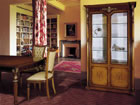 |
Furniture production by craftsmen started in Cantù from mid-19th Century and from the early 1900s Cantù's woodworkers were famous for their skill in manufacturing pieces of great beauty and quality. The ancient art is still very much alive in craftsmen's workshops. Inlaid work, engraving, hand or wax polishing and sartorial work of exquisite class have enabled Cantù to shine above every other hub in the furniture-making sector.
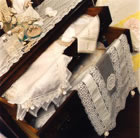 |
Another handicraft which has always been a feature of Cantù is lace, its production starting off in the 1600s with the Benedictine nuns. There has been a cultural revival of Cantù lace in recent years, which has given rise to a number of international fairs.
The Cantù lace association is in Corso Unità d'Italia, 6.
The Cantù lace association is in Corso Unità d'Italia, 6.
 |
Basketball is, along with furniture-making and lace, one of the reasons Cantù is world-famous. It is the foremost local sport and its heyday went from 1970 to 1980, when the primary league team won a dozen national and international records. Founded in 1940, the team is supported by first rate sponsors, coaches and administrators and is the third Italian team after Milan and Varese for number of trophies. From this link you can access the official website of the Cantù basketball team.
Pallacanestro Cantý
Pallacanestro Cantý
 |
Golf
We are at a short distance from the best golf courses
We are at a short distance from the best golf courses
| Golf Carimate | Golf Villa d'Este | Golf Monticello | Golf La Pinetina |
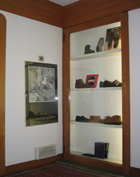 |
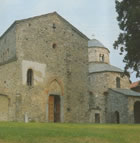 |
E
Galliano complex
It consists of the Basilica of St. Vincent and the Baptistery of St. John. Rebuilt in 1007 over the ruins of an ancient pagan temple at the behest of Ariberto of Intimiano the Archbishop of Milan, it is undoubtedly the monument of greatest artistic value in Cantù and is one of the most significant examples of Romanic architecture in Europe. Over the centuries, from being a major religious centre it goes into private ownership and has been handed over much since then. Eventually, the Council bought it back, re-consecrating and restoring the complex in 1934.
It consists of the Basilica of St. Vincent and the Baptistery of St. John. Rebuilt in 1007 over the ruins of an ancient pagan temple at the behest of Ariberto of Intimiano the Archbishop of Milan, it is undoubtedly the monument of greatest artistic value in Cantù and is one of the most significant examples of Romanic architecture in Europe. Over the centuries, from being a major religious centre it goes into private ownership and has been handed over much since then. Eventually, the Council bought it back, re-consecrating and restoring the complex in 1934.
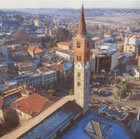 |
Church of St. Paul
Built in the 11th century on the hilltop above Cantù, it is a three-nave basilica, constructed according to the principles of Romanic architecture. The belfry, dominating the town square, was built on the foundations of the castle belonging to the Counts of Pietrasanta, local nobles in feudal days.
Built in the 11th century on the hilltop above Cantù, it is a three-nave basilica, constructed according to the principles of Romanic architecture. The belfry, dominating the town square, was built on the foundations of the castle belonging to the Counts of Pietrasanta, local nobles in feudal days.
